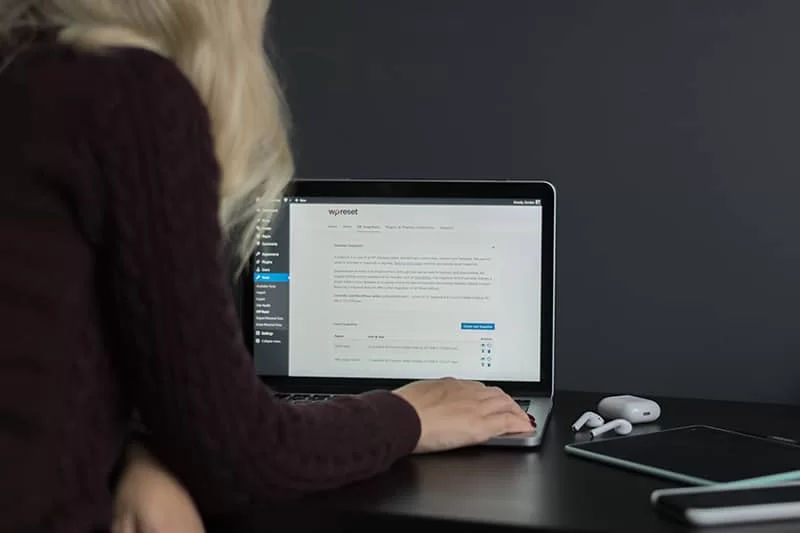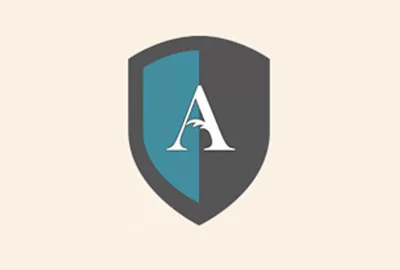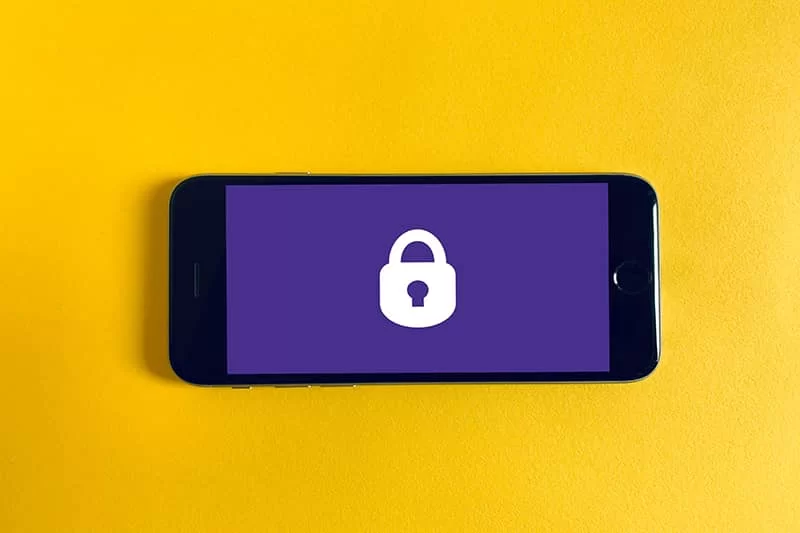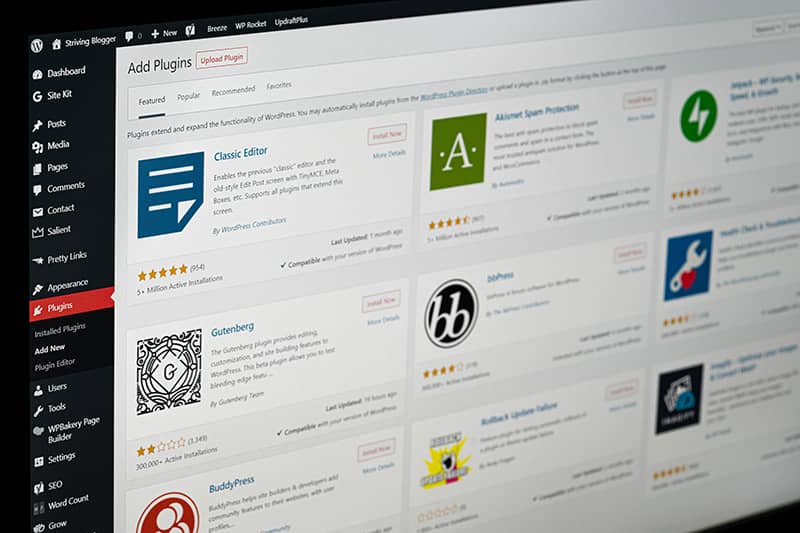In an era where digital presence is imperative, having a responsive website is no longer optional—it’s essential. At Constructive Visual,...

Like most business owners, you don’t have time to waste. You need a website that will work for you and generate revenue, but you don’t want to spend all your time trying to maintain it yourself. That’s where our website maintenance plans come in!
If you have a wordpress website, then this is the perfect article for you. With our maintenance plans, we can help to keep your website up-to-date and reduce any hassle of having to constantly do it yourself.
Cybercrime is BIG business, and it’s already rife in 2022 – So the question now is: How secure is your WordPress Website?
With all of the major high-profile data breaches and cyber attacks of this year with CashApp, Microsoft crypto.com etc. it’s time to think about your own security and how it impacts you as a business owner!
Below are the best practices we focus on to ensure that your Website is protected. Also, We listed these practices for you to complete on your website at your own pace. Keep reading to know more…

One of the most important aspects of website maintenance is keeping your Website secure. We all know that WordPress is a great platform for creating websites but if not correctly secured it can be extremely vulnerable to attack from hackers.
As WordPress is one of the most popular Content Management Systems (CMS) in the world, sites are often targets of hackers and other malicious individuals. This is because WordPress is one of the most popular website platforms globally, which means that there are a lot of potential targets.
There are many ways to keep your WordPress website secure, but we listed down the top 10 best practices to make sure you website secure and to warn of attackers!
One of the most important things you can do to keep your Website secure is to make sure that you’re using the latest version of WordPress. There are two parts to this: updating WordPress itself and keeping all your plugins and themes up-to-date.
WordPress plugins and themes are created by different developers. Sometimes a developer can abandon these creations and that’s where your website can be left vulnerable for an attack. Be sure to check when the last time the developer has updated their code and if it’s over a 6 to 12-month period you may want to consider removing the plugin or theme and look for an alternative.
Updating WordPress is a simple process that only takes a few minutes, but it’s important to do it regularly. New versions of WordPress are released every few months, and each new version includes security updates and other improvements.
Be sure to backup your website in the event anything goes wrong when updating your plugins and themes. If something goes wrong, your website can display an error message or give you a complete white-screen of death. To minimise any downtime, seek a professional to help with updating your website on a regular basis.
Another important part of website security is using strong passwords. This means using a combination of letters, numbers, and symbols that are at least eight characters long.
Creating strong passwords is important, but it’s only the first step. You also need to make sure that you’re using different passwords for each Website and changing them regularly.
You can create a strong password using a strong password generator for your Website and change them regularly. Be sure to store your passwords in a secure location so you don’t lose them.
Programs like 1password and LastPass are great for storing all of your passwords securely on your computer and access them via one password. These programs have a one click approach to logging back into your website with your stored details. This is a must have if you have multiple websites in which you access as strong passwords can often be difficult to remember.
If you’re a WordPress user, it’s important never to give your login details to anyone. Why? Because doing so could jeopardise the security of your site.
There are several ways that someone could misuse your WordPress login information. They could use it to access your site and make changes that you don’t want or need. They could also use it to insert malicious code into your site, wreaking havoc on your business.
It’s important to remember that WordPress is a powerful tool, and it should be treated with care. When it comes to login information, always err on caution and don’t give it out to anyone.
Choosing a good hosting company is important if you’re running a WordPress site. A good hosting company will provide secure servers, regular backups, and support in case of any problems. This will help to ensure that your WordPress site is always up and running and that your data is safe.
There are a few things to look for when choosing a hosting company. First, make sure that the company offers secure servers. This includes firewall, SPAM and DDoS protection. Your data will be safe from hackers and other malicious attacks. Second, make sure that the company offers regular hourly or daily backups.
If anything happens to your site, you’ll have a backup to restore from. Finally, make sure that the company offers support in case of any problems. If you run into any issues, you’ll have someone to help you recover your website.
If you are using a nulled theme for your WordPress site, you are not doing any favors on your site. You may be putting your site at risk without even realizing it. Here’s why using nulled themes is bad and what you can do instead to keep your site safe.
Nulled themes are themes that have been hacked or cracked so that they can be distributed for free. These themes are typically available on shady websites and forums. While the temptation to save a few bucks by using a nulled theme may be great, it’s important to understand the risks involved.
Using a nulled theme is like using a pirated copy of a premium theme. Like with pirated software, there’s no guarantee that the files you’re downloading are safe. It’s quite common for nulled themes to contain malware or other malicious code.
This malicious code can be used to do all sorts of things, like infecting your computer with malware or taking over your WordPress site. Once a hacker has access to your site, they can do anything they want with it. They could use it to send spam emails, host phishing scams, or even launch attacks on other websites. In short, using a nulled theme is a risky proposition. It’s not worth putting your site at risk to save a few bucks.
So, what should you do if you want to use a premium theme but can’t afford to pay for it? We recommend using a free theme from the WordPress.org repository. While there are some risks involved with using any theme, the risks are much lower when using a theme from a reputable source.
Plus, there are plenty of great free themes available. So, you’re sure to find one that meets your needs without putting your site at risk.
One of the best ways to ensure that your WordPress site is secure is to install a security plugin. There are many different security plugins available, and they all offer different features. Some of the most popular security plugins include Wordfence, Jetpack, and Sucuri. These plugins will help protect your site from hackers and other malicious activity.
One of the most important features of a security plugin is the ability to scan your site for vulnerabilities. This will help you identify any potential security issues to fix before exploiting them. Another important feature is the ability to block malicious traffic. This will help keep your site safe from bots and other automated attacks.

by All In One WP Security & Firewall Team
The wp-login.php file is the file that handles all login requests for your WordPress site. By default, this file is located in the root directory of your WordPress installation. This means that anyone who knows the URL to this file can easily log into your WordPress site.
While this may not seem like a big deal, it can be a serious security risk. Hackers can use brute force attacks to try to guess your password. If they are successful, they can gain access to your WordPress site and wreak havoc.
In addition, if you ever accidentally leave your WordPress login page open, anyone who sees it will be able to log into your site. This can lead to problems, including someone changing your password or gaining access to sensitive data.
Changing your WordPress login URL is a simple and effective way to protect your site from these attacks. Doing this can make it much harder for hackers to find and access your login page. In addition, you can also make it harder for yourself to leave your login page open accidentally.
There are a few different ways to change your WordPress login URL, but the best method is to use a plugin. There are a few different plugins that you can use, but we recommend using the WPS Hide Login Security plugin. This plugin is highly rated and has over one million+ active installs.
Once you have installed and activated the plugin, you will need to go to the Settings, and simply there, you can find a box in which you can enter your custom login URL, then hit the save button, and you are done.
Another great way to protect your WordPress site from brute force attacks is to limit the number of login attempts that a user can make. By default, WordPress does not limit the number of login attempts a user can make. A hacker could potentially try to guess your password unlimited times. Of course, this is a very effective way to protect your site. A hacker could potentially try to guess your password without any limit.
Fortunately, there are a few plugins that you can use to limit the number of login attempts that a user can make. One of the most popular plugins is Limit Login Attempts Reloaded. This plugin is highly rated and has over two million+ active installs.
Once you have installed and activated the plugin, you will need to go to the Settings page and configure the plugin. We recommend setting the maximum number of login attempts to three. This will help protect your site from brute force attacks without making it too difficult for legitimate users to log in.
Web coding changes all the time – and WordPress is no different. New versions of WordPress are released frequently, including updates to the codebase. Keeping your WordPress site up-to-date ensures that you’re always using the most recent, stable version of the software.
Known security loopholes are fixed regularly in new WordPress releases. By keeping your site updated, you can ensure that any potential security vulnerabilities are patched as soon as possible.
In addition to security fixes, new WordPress releases often include performance improvements. By updating to the latest version of WordPress, you can ensure that your site is running as efficiently as possible.
Sometimes new features are also added to new WordPress releases. By keeping your site updated, you can take advantage of any new functionality added to the platform.
A secure website should include a SSL (Secure Sockets Layer) certificate, which is indicated by going to your browser’s address bar and spotting the https:// at the front of a domain name.
The SSL protocol protects communication between your website and server with a level of encryption of the data been sent. This in tern prevents hackers from easily reading or interfering with the information that is being passed on your website from page to page or to an outside source (another website).
Having an SSL Certificate on your website is pretty standard these days. There are free SSL Certificates that may be provided and installed by your web host or you can purchase paid SSL Certificates with higher encryption and a warranty for your peace of mind in the event of a data breach.
If you have a website that stores sensitive client information such as a membership, e-commerce or forum website it is suggested to acquire a paid SSL Certificate for better protection and support from the provider in any case of a lawsuit when dealing with payment and personal detail storage of the users on your website.

Not updating WordPress is one of the biggest security risks you can take with your site. Here are 3 of the most serious risks that you face by not keeping your WordPress site up-to-date:
If you’re running an old version of WordPress, your site could be vulnerable to attack. Hackers can exploit vulnerabilities in outdated code to take over your site, deface it, or use it to distribute malware.
To protect your site, it’s important to keep WordPress up to date. Each new release includes security fixes for vulnerabilities that have been discovered. By running the latest version of WordPress, you can help to protect your site from attack.
If you’re not sure whether your WordPress site is up to date, you can check the version number in the footer of the admin area. Updating WordPress is easy – you can usually do it with just a few clicks from the admin area. However, if you’re not comfortable updating WordPress yourself, you can always hire us to do this regularly for you.
Another serious security risk you face by not updating WordPress is data theft. If your site is hacked, a hacker could access sensitive information such as customer details and financial data.
In some cases, hackers may also be able to encrypt your Website’s files and demand a ransom from you to decrypt them. This type of attack, known as ransomware, can be very difficult to recover from.
By keeping WordPress up-to-date, you can help to protect your site from data theft. New WordPress releases include security enhancements that make it more difficult for hackers to access your site’s data.
If you’re running an outdated version of WordPress, a hacker could potentially gain access to your web server. This would give them full control over your site, including the ability to delete files, install malicious software, and even launch denial-of-service attacks.
To protect your server from attack, it’s important to keep WordPress updated. New versions of WordPress include security features that make it more difficult for hackers to access your server.
In addition to keeping WordPress up to date, you should also have a plan for backing up your Website. If your site is hacked or experiences an unexpected outage, you’ll be able to restore it quickly if you have a recent backup.
Many WordPress maintenance services will perform these tasks for you. These services will typically charge a monthly fee, but they can save you time and hassle. You can also order Constructive Visual WordPress Maintenance Plans; We offer the cheapest plans that you can order to automate your WordPress Maintenance.

If you don’t update WordPress, eventually, you will run into a problem. It might be a compatibility issue with one of your plugins or a theme update that breaks your site.
In some cases, you might not even realize that your site is outdated until it’s too late. For example, if you’re running an old version of WordPress, your site could be hacked, and you might not even know it.
There are many types of problems you can face, but Two of the most general problems with outdated WordPress sites are listed below.
The white screen of death in WordPress is an error when a user tries to access a WordPress site and is presented with a blank white page. This can be caused by several things, including plugin or theme compatibility issues, database connection problems, or server errors.
A few things can be done to try and fix the white screen of death in WordPress. First, check if your site is still accessible via the WordPress admin area. If you can still access the admin area, you can try deactivating all of your plugins and themes to see if one of them is causing the problem. If that doesn’t work, you can try connecting to your site via FTP and replacing the WordPress core files with a fresh copy from WordPress.org.
If you’re still seeing the white screen of death after taking these steps, you’re likely dealing with a more serious issue that will require assistance from your host or a WordPress developer.
If your WordPress site is hacked, a hacker could access sensitive information such as customer details and financial data. In some cases, hackers may also be able to encrypt your Website’s files and demand a ransom from you to decrypt them. This type of attack, known as ransomware, can be very difficult to recover from.
If you think your WordPress site may have been hacked, you should first change all of your passwords. This includes your WordPress admin password, FTP password, database password, and any other passwords that are associated with your site.
Once you’ve changed your passwords, you can scan your Website for malware using a tool like Sucuri’s SiteCheck. If you find that your site has been compromised, you’ll need to clean it up and then take steps to secure it against future attacks.
One of the most common hacks is a “SPAM hack“. This is where a hacker gains access to your Website and then inserts their advertising on your site’s pages. In some cases, they may also redirect your Website’s visitors to another site altogether.
If you think your WordPress site has been hacked, you should first check your pages to see if there’s any unusual or unwanted content on them. If you find that there is, you’ll need to remove the malicious code from your site. This may be as simple as deleting a few files from your server in some cases. However, it may require assistance from a WordPress developer or IT support in some cases.
If your Website is outdated, it’s more susceptible to being hacked. If a hacker does manage to compromise your site, they could potentially take it down or even redirect your visitors to another site. In some cases, Google may also flag your Website as being hacked and warn visitors away from it.
To avoid these issues, it’s important to keep your WordPress site up to date. This includes updating your WordPress core, plugins, and themes. It’s also a good idea to create regular backups of your site so that you can restore it if it does get hacked.

A hacked WordPress website can damage your business name and brand. Hackers can deface your Website, steal sensitive information, or even use your site to distribute malware. This can damage your reputation, cost you customers, and put you at risk of legal action. Below are the possible problems you will face:
If your Website is hacked and displays offensive content, you will lose sales and customers. This is because the inappropriate content will put off potential customers, and existing customers will not want to do business with a company associated with such material.
People do business with people that they know, like and trust and once you have broken that trust factor with them it can take some time to win them back over.
It is best practice to notify your audience by your email list, alert notification on your website, social media post or by any other means that your website has been compromised, they should look at scanning their computer for infections and that you have successfully repaired your website when it is fixed by your developer or web hosting support team.
A hacked website can also damage your reputation, as it shows that you cannot protect your site from attack. This can make potential customers question your ability to protect their information and make them hesitant to do business with you.
Your website visitors can report your infected/compromised website to search engine websites and spread by word of mouth to members in their community their negative experience that they’ve had on your website.
Information about an infected website can be shared on social media channels to a vast network where more people are warned to stay far away from your website.
If your Website is hacked and used to distribute malware, you could be liable for any damages caused by the malware. This includes any damage to computers infected by the malware and any losses incurred by businesses affected by the malware.
You may also be subject to civil or criminal action depending on which country/state that you live on as they may have different laws to deal with these damages.
To protect your business, it is important to take steps to secure your Website and prevent it from being hacked. Contact a professional if you need help securing your site and speak to a lawyer if you’re threatened with legal action from a website visitor.
If your Website is hacked and displays offensive or inappropriate content, visitors will not want to return. This is because the content will put them off, and they will not want to risk their computers being infected by malware. In order to protect your Website’s reputation, it is important to remove any hacked content as soon as possible.
Once you have lost the trust of your visitor it may take time to win them back over. This is why you should take website security seriously and do everything you can to prevent your Website from being hacked in the first place.
In the case of your website being compromised, get onto it straight away! First, contact your web hosting provider and ask for them to take the website down or place it in maintenance mode and deal with the infected files and patch any security holes straight away.
If your website is hacked, you may lose your search engine ranking. This is because hacked websites are not something that the search engines want to promote. They would rather show websites that are safe and secure in their results. So, if your site is hacked, it is likely that your ranking will suffer as a result.
Recovering from a hacked website to gain trust with the search engine platforms may take some time in order to gain their trust once again. During this time, your search engine results may take a hit, where your website may fall in page rank or the search engines may remove your listing entirely.
In order to ensure that your website does not lose its ranking, it is important to take steps to secure your site and prevent it from being hacked in the first place. These steps may include installing security plugins, keeping your software up to date, and using strong passwords.
If you do find that your website has been hacked, there are a few things you can do to try and rectify the situation. First, you should change all of your passwords and update any security plugins that you have installed. You should also reach out to the search engines and let them know about the hack so they can take appropriate action. Finally, you should take measures to ensure that your website is less vulnerable to attack in the future.
By taking these steps, you can reduce the risk of your website being compromised and falling behind in your social media page results due to having a compromised website.
No, it’s not easy. You will need to clean up the Website, and this can be a time-consuming and difficult process. You will also need to take steps to prevent your Website from being hacked again. This includes ensuring that all your software is up to date and that you have a strong password policy in place.
If you have a hacked WordPress website, it is important to act quickly to minimize the damage. You should first make your site offline so visitors cannot see the hacked content. You should then contact a WordPress security expert to help you clean up the Website and secure it against future attacks.

For you peace of mind we offer a done-for-you service as a “Website Maintenance Plan”. A website maintenance plan is a service that helps you keep your WordPress site up to date and backed up. This can save you time, as you will not need to do these tasks yourself. It can also help protect your site from being hacked, as the company that provides the service usually has security measures in place.
Many companies offer website maintenance plans, and you should choose one that is reputable and has a good track record. You should also make sure that the plan includes features that you need, such as regular backups and security scans.
A website maintenance plan is a great way to save time and reduce the risk of your WordPress site being hacked. Make sure you choose a reputable company like ours and ensure the plan includes the features you need. This will help you keep your site up to date and secure and save you time in the long run.

If you choose to go with a Constructive Visual WordPress Website Maintenance Plan, you can rest assured that your website will be kept up-to-date and secure. We will regularly back up your site, so you don’t have to worry about losing any important data.
We offer one of the best and cheapest Maintenance plans for you. Plus, our team of experts will be available to answer any questions or concerns you may have.
Found this article interesting? Let us know below!
Loved this article? Please consider sharing it with your friends…

Peter Lowen
Senior Web Developer | CEO
Peter Lowen is the founder and CEO of Constructive Visual, a website design and hosting company. He has been creating websites since 2005 and writes content on business, marketing, web design, sales training, web hosting and WordPress related topics.
Responsive Web Design – Best Practices for a Responsive Website
In an era where digital presence is imperative, having a responsive website is no longer optional—it’s essential. At Constructive Visual,...
Strengthen your Perth & Wheatbelt business’s online presence with tailored website design and hosting, raising visibility, enhancing user experience, and...
Branding is essential for any business, big or small. It helps to create a unique identity and sets you apart...
Creating a Strong Online Foundation – Small Business Web Design in Perth
In today’s digital age, having a well-designed website is crucial for small businesses in Perth. A professionally designed website can...

We are an SEO & web design agency located in Northam, Western Australia.
Address: PO Box 985,
Northam WA 6401
Location: Perth, Western Australia
Phone: (08) 6118 9186
Email: Contact Us
Services
Information




